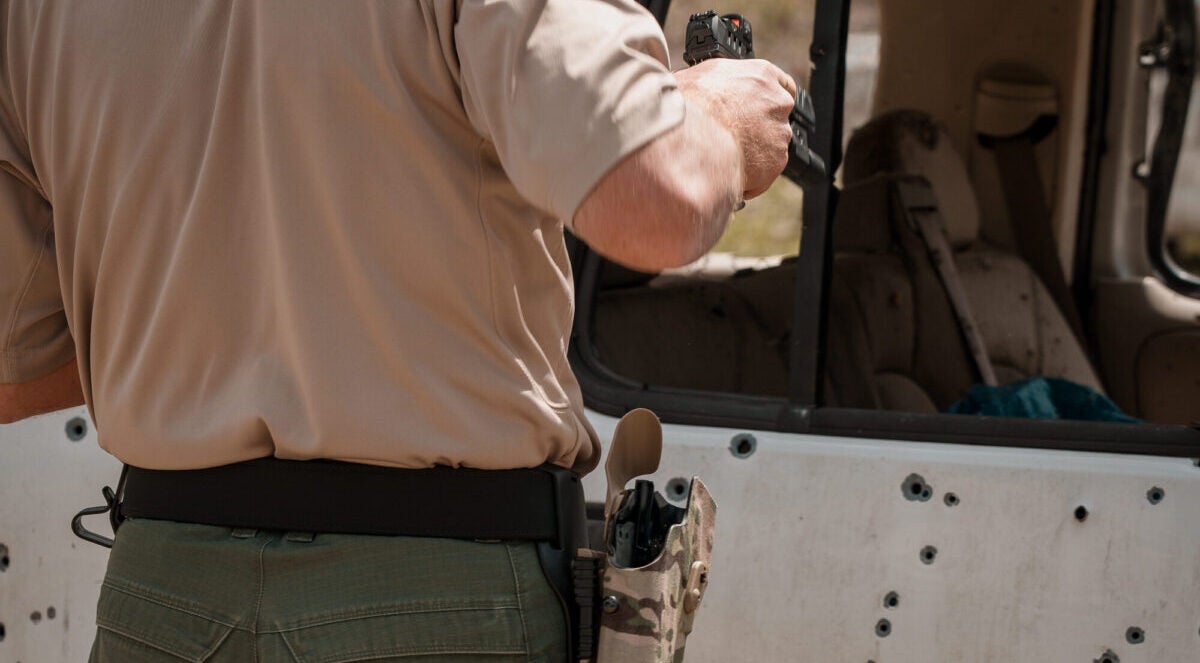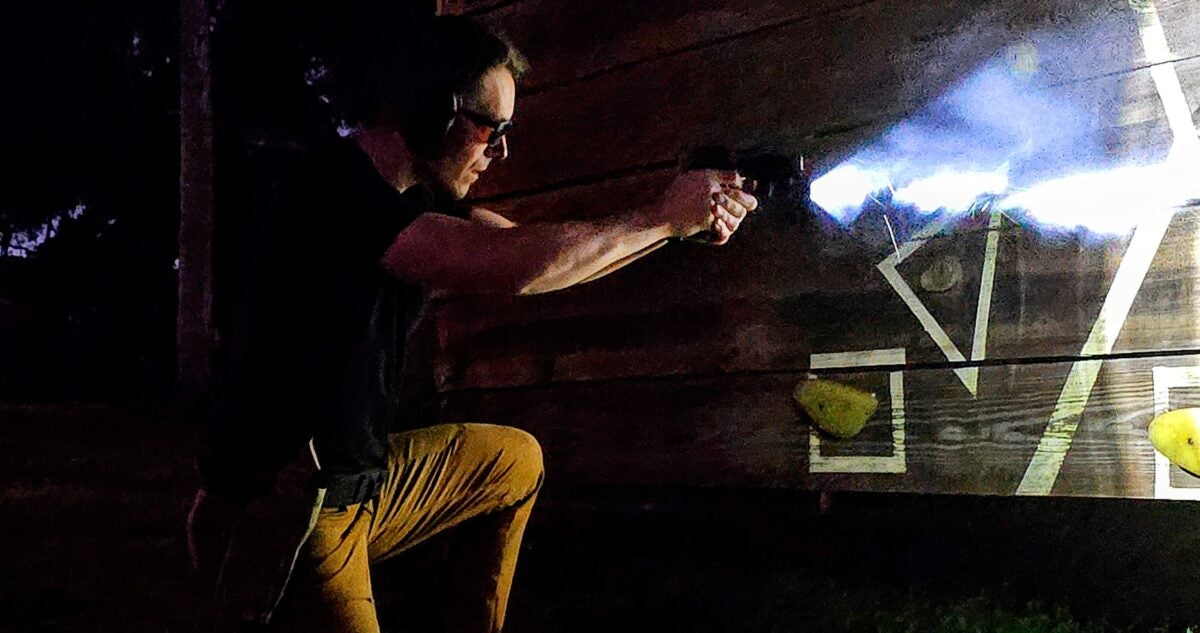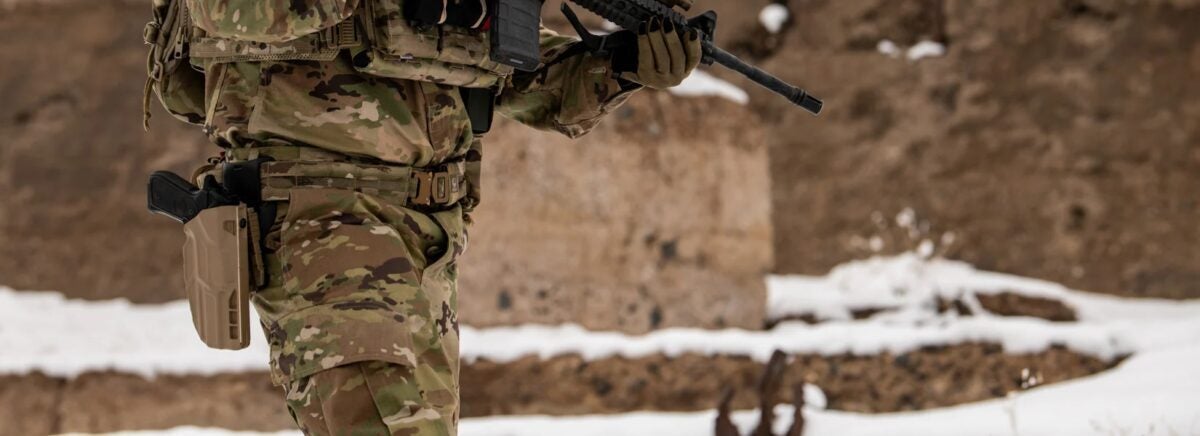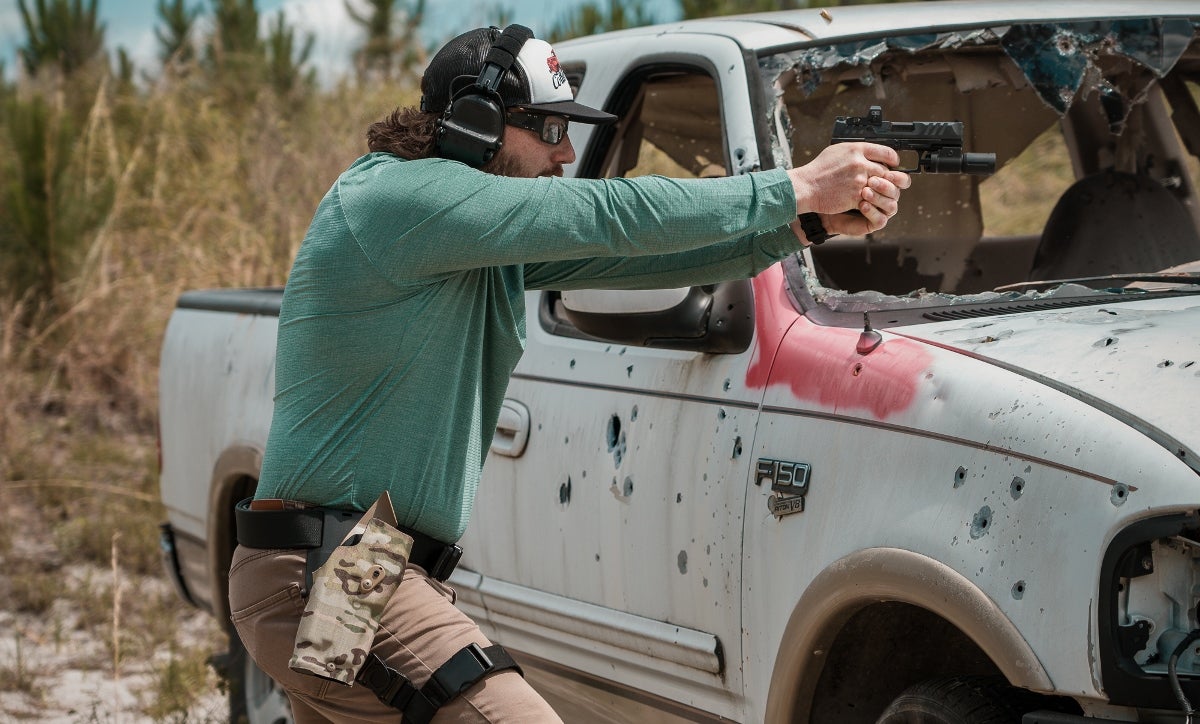Safariland retention holsters are the gold standard in every sense of the word for law enforcement and civilians alike. The retention of your weapon until the time that you deem you need it is paramount in all situations. Sometimes this can dictate a tight, firm draw with several safeties – or, levels of retention – that must be defeated before deployment. Other times, all that is needed is a slick, quick draw. Your specific use-case out in the field will dictate which is needed for you. From police work where you might end up on the ground grappling an unsavory individual to hunting scenarios where you are scrambling over craggily rocks to recover wild game, there are many levels of retention that Safariland offers to cater to varying demands and needs. Today, we will assess the varying Safariland retention holsters they offer, their specific levels of retention, and how this clearly defined system can aid you in making proper purchases from occupational needs to hunting outings and everything in between. Let’s dive in!
Safariland Coverage on AllOutdoor
- Safariland Species Holster Receives New Drip with MultiCam Black
- Safariland Black Friday & Cyber Monday Deals – Multicam Everything!
- Safariland: Multi-Cam Arid Camo plus New Fits for the Springfield Echelon
- Incognito Comfort – Safariland x Haley Strategic’s New Incog X
- Safariland Introduces the New Concealable OWB Solis ALS Holster
I already own several Safariland holsters that I have come to deeply appreciate after competing with them at events like The Tactical Games and while carrying a secondary sidearm when hunting. In The Tactical Games, I tripped and took a spill (or two) and my pistol was always crisply and confidently retained within the holster. Similarly, when hunting you can stumble and trip on occasion when traversing precarious, unfamiliar terrain and my gun and I were safe all the same. The safety component of Safariland retention holsters I was familiar with, but the precise nomenclature or nuances of their retention levels I was ignorant to. In order to become better acquainted with the finer points of Safariland’s levels of retention, I was invited down to the Deep Woods Ranch in Florida – the home of former Navy SEAL Rich Graham’s training facility for his “Full Spectrum Warrior” company. Before we address that training and what Safariland retention holsters are all about, we will indulge ourselves with a bit of Safariland’s history to better understand where they might be headed.

Safariland – Company History
While Kydex holsters are not new by any stretch of the imagination, they certainly have reached historic heights in the past decade for civilian shooters as well as a legendary backing from law enforcement. Safariland was established back in 1964 – some 60 years ago – and the Safariland secret sauce may not have arrived (some could argue) until 1985 when they purchased the Rogers Holster Company. Former FBI Agent Bill Rogers developed the first Kydex holster in 1972 and started the Rogers Holster Company soon after in 1973. The motivation to develop Kydex holsters was to better protect police officers – so, their weapons would not be stolen and used against them.

The Importance of Clearly Defined Levels of Retention
While Bill Rogers and Safariland have developed, crafted, and matured Kydex holsters into the refined tools that they are today with an initial drive to protect law enforcement, we can all benefit from their various safety measures. A retained weapon is a safe weapon. It means that you, the owner, are the one who shall direct and wield it. Not a criminal looking to steal it, not an overly curious child when you’re distracted, and not a tree branch looking to dislodge it as you’re tracking the blood trail of an elk. As we shall soon outline, retention can come in many forms. Sometimes it can be a supremely simplistic friction-fit style for competition holsters while other times multiple hand movements will be required before a firearm can be drawn. It all depends on what you need the holster for, how you will use it, and what suits you best. This is why Safariland retention holsters come in 4 unique and clearly defined levels of retention.

Safariland Retention Holsters – Level 1
The staple of Safariland’s portfolio are their ALS holsters (“Automatic Locking System” holsters) and their many iterations. This is the 1st variation of a retention Kydex holster that Bill Rogers ever produced; and because of its one distinct hand movement required to retrieve your weapon, it can be clearly defined as a Level 1 retention holster. No awkward straps, thumb slips, or material that can change shape over time. Just a succinct motion to deploy your firearm while retaining it away from those who should not have it.
A Safariland Duty Rated Level I Retention holster is equipped with the ALS® (Automatic Locking System) only which requires one manual hand movement to release the firearm from the holster. All Safariland Duty Rated Level 1 Retention Holsters must pass the Safariland Retention Level Test, a six part simulated thirty second “grab and snatch” initiated by an adversary.
This is the most popular retention level for military and competitive shooters, as it firmly locks the firearm into place, keeping it from dislodging during running or moving through obstacles.
Safariland Retention Holsters – Level 2
As we move into what is a Level 2 holster, these can come in many shapes, sizes, colorways, and innumerable configurations for the plethora of handguns on the market today, but the one clearly defined commonality amongst all of them is that a Level 2 holster requires two distinct hand movements to remove your retained firearm from its holster.
The Safariland Duty Rated Level II Retention models have the SLS
(Self-Locking System) only which requires two manual hand movements to release the firearm from the holster. Safariland’s Duty Rated Level 2 Retention Holsters can be comprised of the SLS security mechanism alone or by adding the ALS Guard to holsters with the ALS security mechanism.
Safariland Retention Holsters – Level 3
If you step your way up to a Level 3 retention holster from Safariland, you are now blending multiple, patented features to secure your firearm. While a Level 3 holster is most commonly used by those in law enforcement, this is a holster meant for any gun owner to deploy as they see fit.
The most commonly used Safariland Duty Rated Level III Retention models have both the ALS® lock and the SLS
strap. By combining the ALS and SLS security mechanisms, a total of three manual hand movements are required to release the firearm from the holster. This retention level is the most common model for patrol and general duty use.
Safariland Retention Holsters – Level 4
Finally, we have reached the coveted Level 4 retention holster from Safariland. This holster requires 4 manual, distinct movements of your hand in order to release your weapon from the holster. This type of holster is the ultimate in retention because so many layers of safeties and retention are built in. As a result, these are commonly used by corrections officers where they must be near or within an intimate space of individuals making their way through the corrections system.
Safariland Duty Rated Level IV Retention models have the ALS® lock and the SLS
strap with the addition of the SLS Sentry Guard. With the combination of the ALS, SLS, and SLS Sentry Guard security mechanisms, a total of four manual hand movements are required to release the firearm from the holster. This retention level is not typically used for patrol and general duty but is more commonly used by corrections.
Safariland Retention Holsters
As you’ve now seen, Safariland’s Duty Rated Holsters are categorized into 4 different retention levels based on the number of distinct hand movements required to clear the security mechanisms before the firearm can be drawn. If you’re looking for a specific level of retention for your next holster purchase, Safariland has their holsters organized by retention level:
- Duty Rated Level 1: (1) Distinct Hand Motion
- Duty Rated Level 2: (2) Distinct Hand Motions
- Duty Rated Level 3+: (3) Distinct Hand Motions
Revisiting the training that my TFB colleague – Luke Cuenco – and I participated in earlier this year, Safariland indulged our curiosity by pushing us through demanding training put on by Rich Graham of Full Spectrum Warrior training with all 4 of their levels of retention in holsters. This varied from shooting firearms off the top of shipping containers, out of moving vehicles, and even fighting on the ground for the control of firearms (unloaded and in a safe, controlled environment).

So, the next time that you are looking for a retention holster, remember that there is only one company that has clearly defined levels of retention: Safariland. Additionally, if you’re interested in learning more about Rich Graham and the Full Spectrum Warrior training facility, you can tune in to TFB’s Behind the Gun podcast – TFB Behind The Gun Podcast #115: Full Spectrum Warrior Training w/ Rich Graham – where we’ll be hearing from Rich Graham himself, as well as directly from Safariland to talk about their company history. As always, let us know all of your thoughts about Safariland, Safariland retention holsters, the Full Spectrum Warrior training facility, and Rich Graham in the Comments below! We always appreciate your feedback.
Safariland Social Media Channels
- Safariland – Website
- Safariland – Instagram
- Safariland – Facebook
- Safariland – YouTube
Full Spectrum Warrior Social Media Channels
- Full Spectrum Warrior – Website
- Full Spectrum Warrior – Instagram
- Full Spectrum Warrior – Facebook
- Full Spectrum Warrior – YouTube

The post Safariland Retention Holsters: Clearly Defined Levels of Retention & Safety appeared first on AllOutdoor.com.


